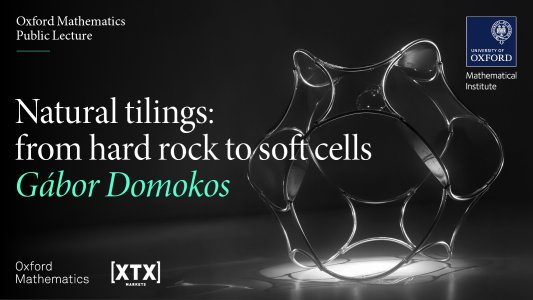In this Oxford Mathematics Public Lecture Gábor Domokos uses the geometric theory of tilings to describe natural patterns ranging from nanoscale to planetary scale, appearing in physics, biology, and geology.
Rock fragments can be modelled by polyhedra having, on average, six flat faces and eight sharp vertices, reflecting Plato’s postulate of pairing the element Earth with the cube. If we depart from polyhedra and admit curved faces then we can tile space without any sharp corners with a new class of shapes, called soft cells, which appear in both living and non-living nature.
This lecture will be premiered on our YouTube Channel on Thursday 22 May at 5pm (and any time after). No need to register for the online version.
Gábor Domokos is a research professor at the Budapest University of Technology and Economics. He is best known for proving a conjecture of V.I. Arnold by constructing, with Péter Várkonyi, the Gömböc, the first homogeneous, convex shape with just one stable and one unstable static equilibrium. Since then he has developed geometrical models of natural shapes and their evolution, including Martian pebbles, turtles shells, planetary crack patterns, rock fragments, asteroids, ooids, supramolecular structures and, most recently, soft cells.
The Oxford Mathematics Public Lectures are generously supported by XTX Markets.


